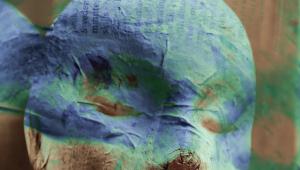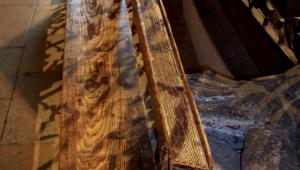HP Photosmart R707; Can In Camera Features Improve Your Images? Page 2
 |
|
|
 |
|
|
 |
|
|
If you're shooting with the
HP Photosmart R707, there's a simpler solution. Activate the Adaptive
Lighting Technology (ALT) feature in the electronic menu. Unique to the R707
at the time of this writing, ALT automatically moderates contrast and lightens
dark areas. Using a sophisticated masking and "dodging" algorithm,
the in camera software helps to reveal detail hidden in the shadows while maintaining
pleasing contrast.
Evaluation: The ALT feature adds about 20 seconds to the image processing time,
so it's not ideal when you must shoot quickly. The "low" level
is ideal for most situations. In strong backlighting, as with extremely bright
sky, sand or water, the "high" level is required to adequately lighten
shadow areas. Use it only when necessary, because the images will not be as
natural looking; digital noise also becomes more obvious in the lightened areas.
Overall, the ALT technology is very successful in difficult lighting conditions,
revealing a surprising amount of detail even in the darkest shadow areas.
Eliminating Redeye
Common in people pictures made with flash in dark locations, redeye is caused
by reflections from blood vessels in the eye. Although redeye reducing flash
is standard in most cameras, many users prefer not to use that feature. Their
subjects find the bright pre-flashes annoying or confusing and it can cause
them to blink, resulting in pictures with closed eyes; finally, the delay required
for pre-flash completion makes it difficult to capture a fleeting moment.
 |
 |
 |
|
|
Several companies have been working
to develop alternatives, employing in camera software. Hewlett-Packard and Nikon
were the first to announce cameras incorporating a redeye removal feature, but
it's likely to become widespread within the next year. The Nikon Coolpix
4200 and 5200 incorporate technology developed by FotoNation Inc. (www.fotonation.com);
the software was designed to work only on images made with the redeye reducing
pre-flash mode. According to the manufacturer, it's designed to avoid
"false detection" caused by subjects such as red holiday lights
and polka dots.
The Photosmart R707 incorporates the IRISS (Intelligent Redeye Imaging Software
Solution) technology, developed by Pixology Inc. (www.pixology.com)
in collaboration with Texas Instruments. This system analyzes an image to detect
and correct redeyes automatically, usually without affecting any other elements.
The software also provides a preview of the areas that will be corrected, allowing
the user to reject the suggested correction if it includes other subject areas.
- Log in or register to post comments

































